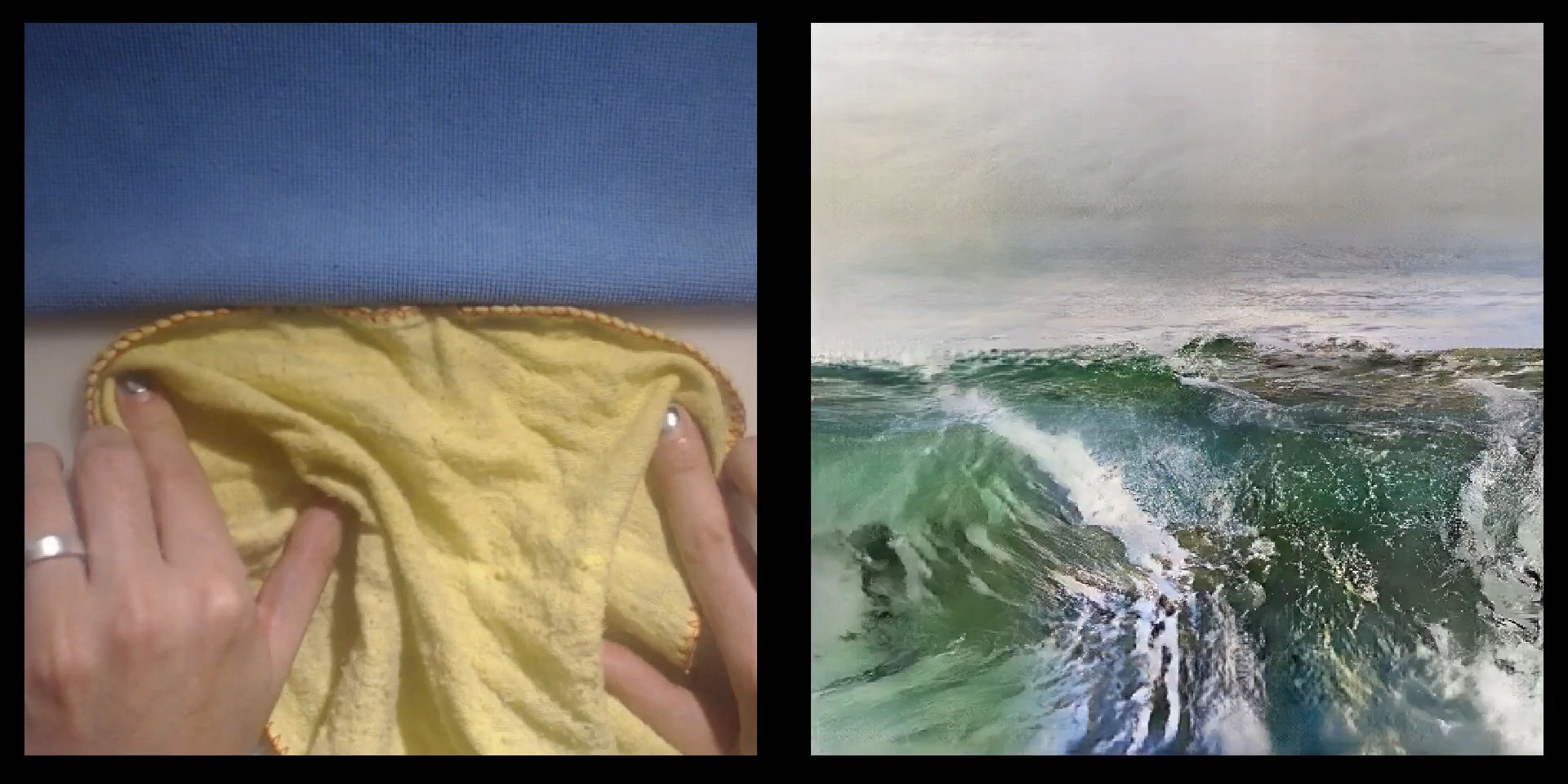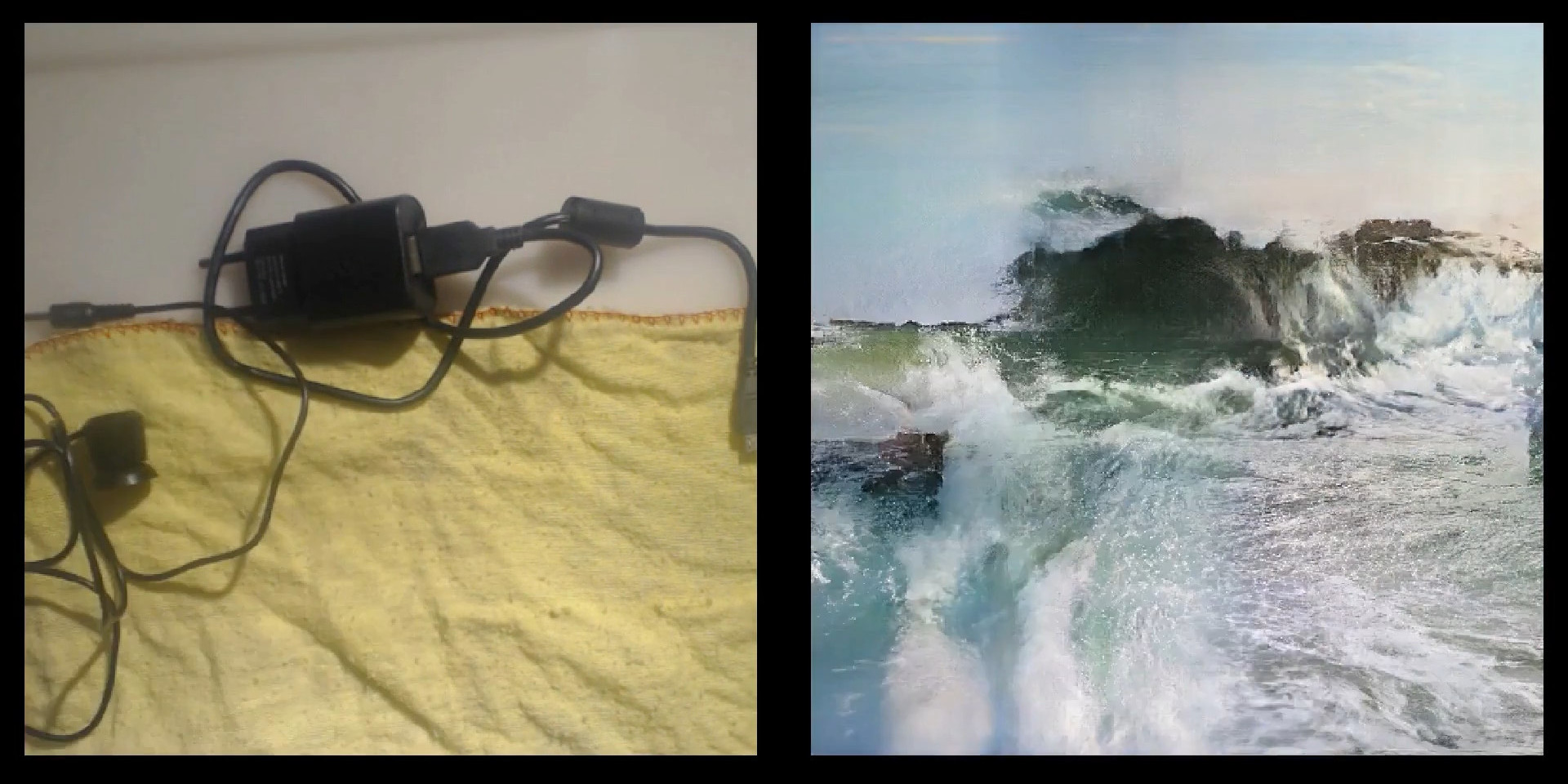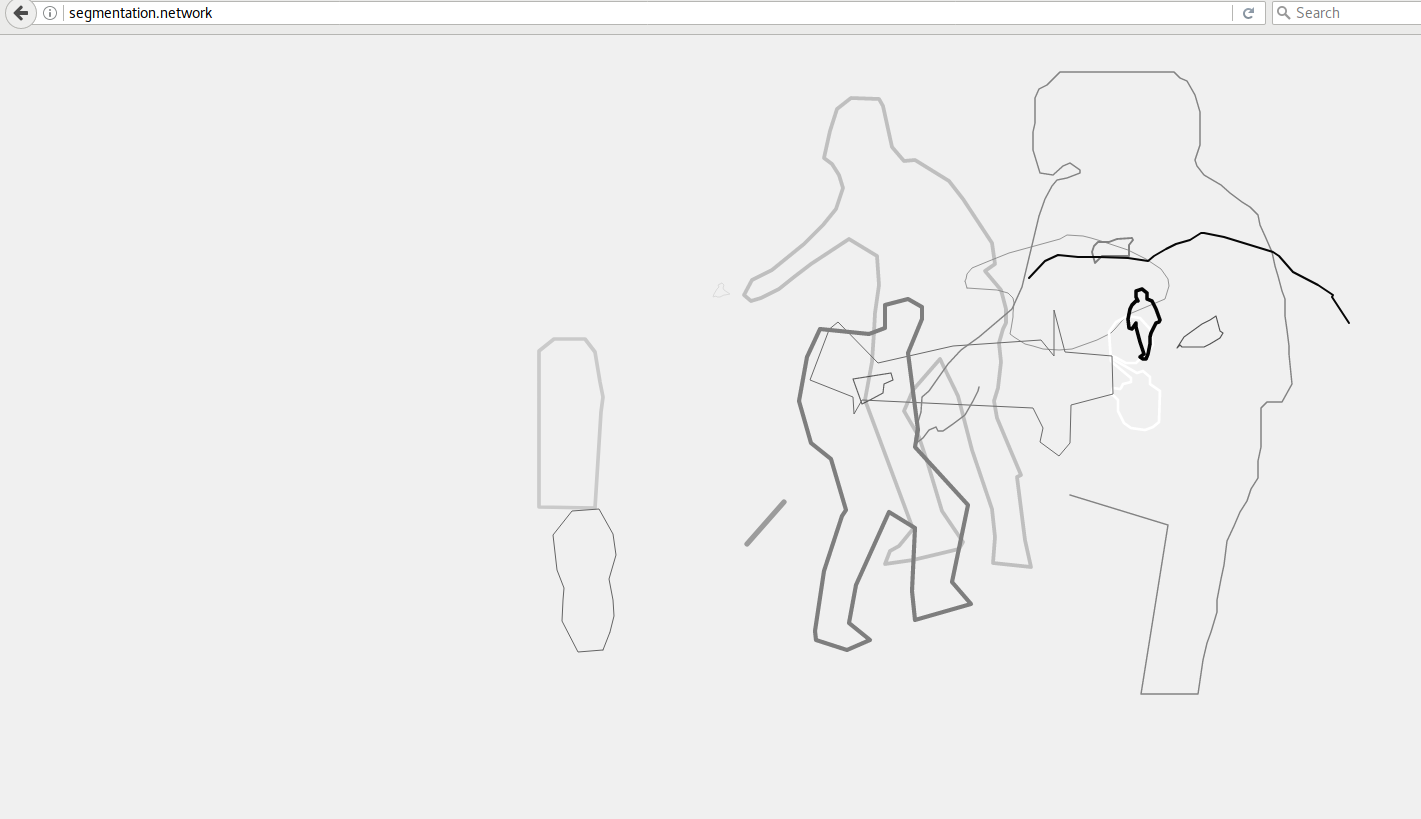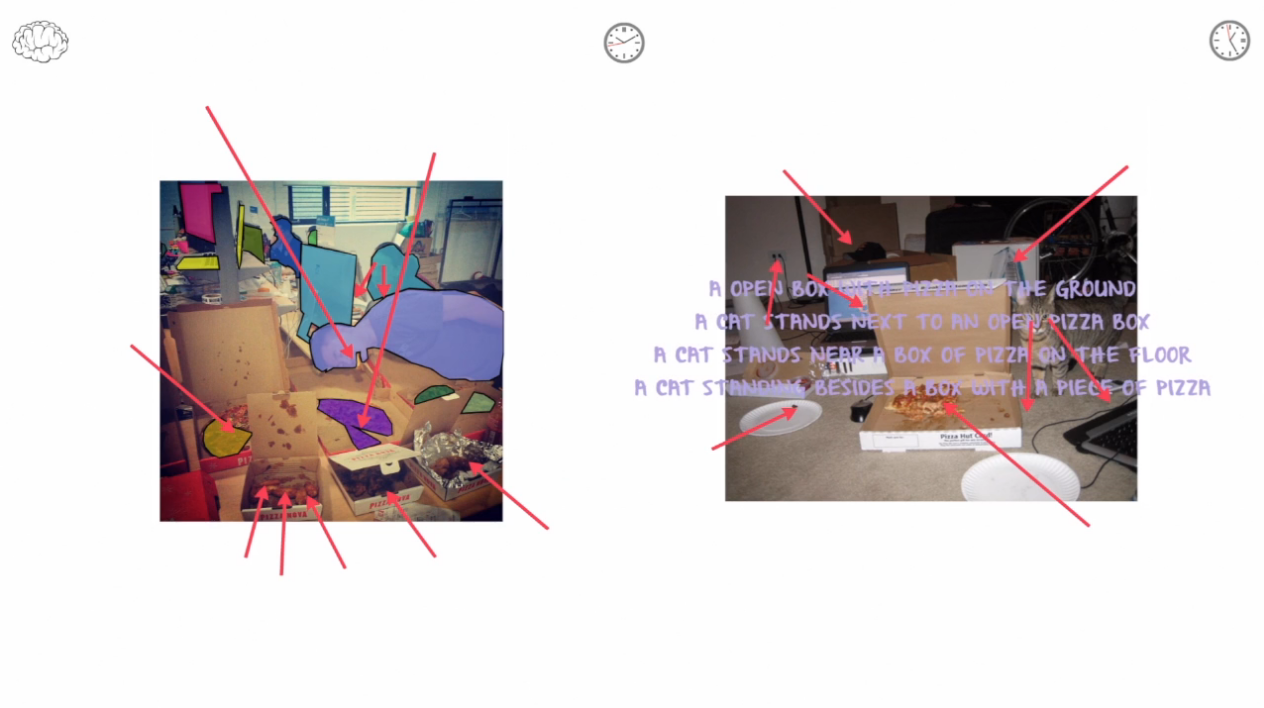Image Classification in artistic practice
Contents
Image Classification in artistic practice¶
= mapping image data to (image) data/ categories/ phenomena
Adam Harvey – CV Dazzle (2010 - )¶
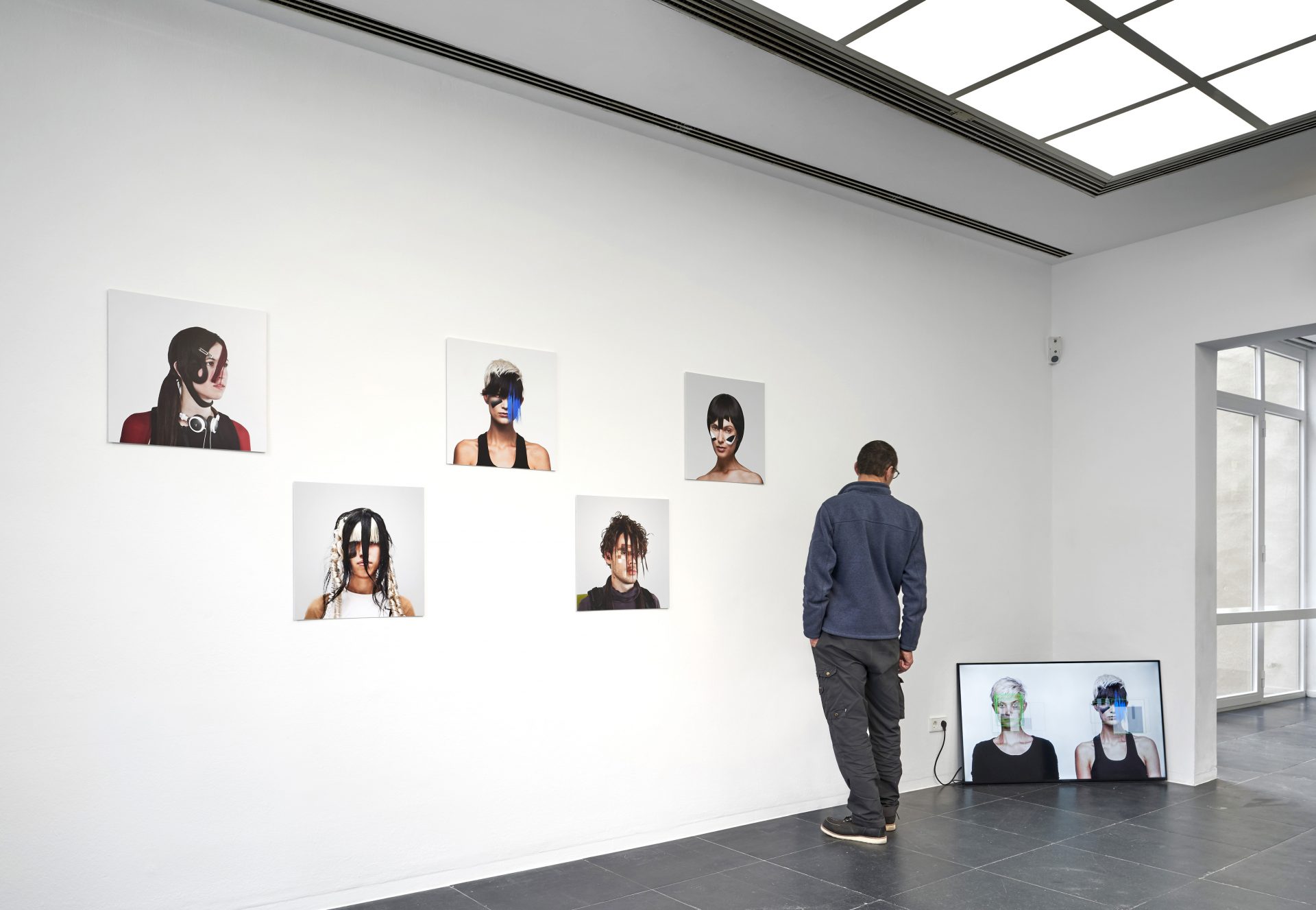
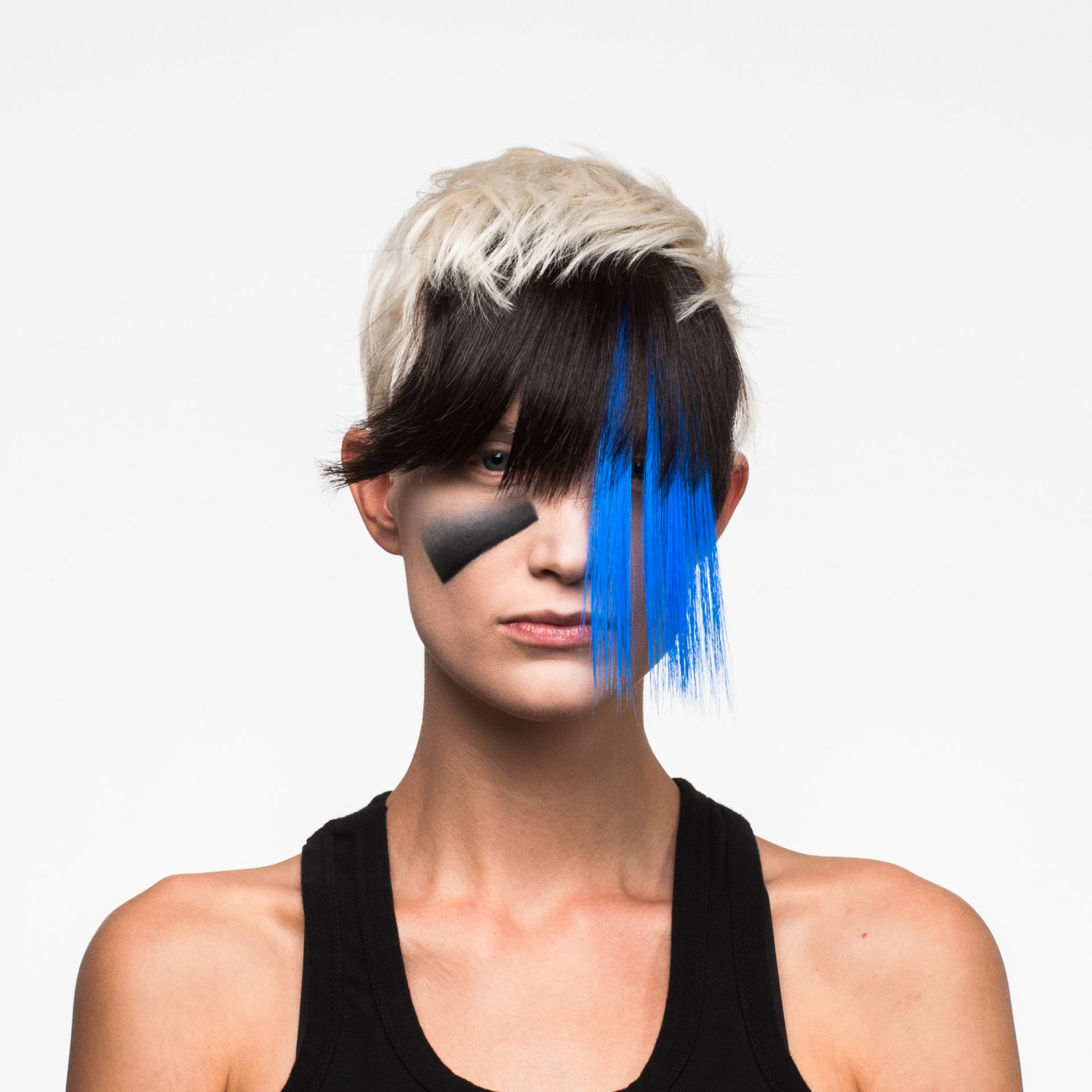
Adam Harvey’s »CV Dazzle« offers styling tips to avoid face detection. Within this he also shows us what features of our faces are of importance for the computer vision algorithms: Like the oval shape of the face, the distance between ears and eyes, the relation between mouth and nose, the overall symmetry. Harvey shows that neural nets are trained to very specific tasks. They generalize the training data. Very special and rare features are ignored. He shows that it’s possible to bypass or mislead even sophisticated neural nets. Using the technology, but also working against it as an activist.
Shinseungback Kimyonghun – Nonfacial Portrait (2018)¶




»Nonfacial Portrait« from Shinseungback Kimyonghun is similar to Harvey’s »CV Dazzle« in the general concept of hiding a face from a face detection algorithm. But they use the technology more like a tool to create an artistic piece in itself with the portraits. It’s less about activism because it’s not us hiding from the algorithm, instead finding new visual expressions with the help of/ constrained by the technology.
Johanna Reich - Face Detection (2018)¶
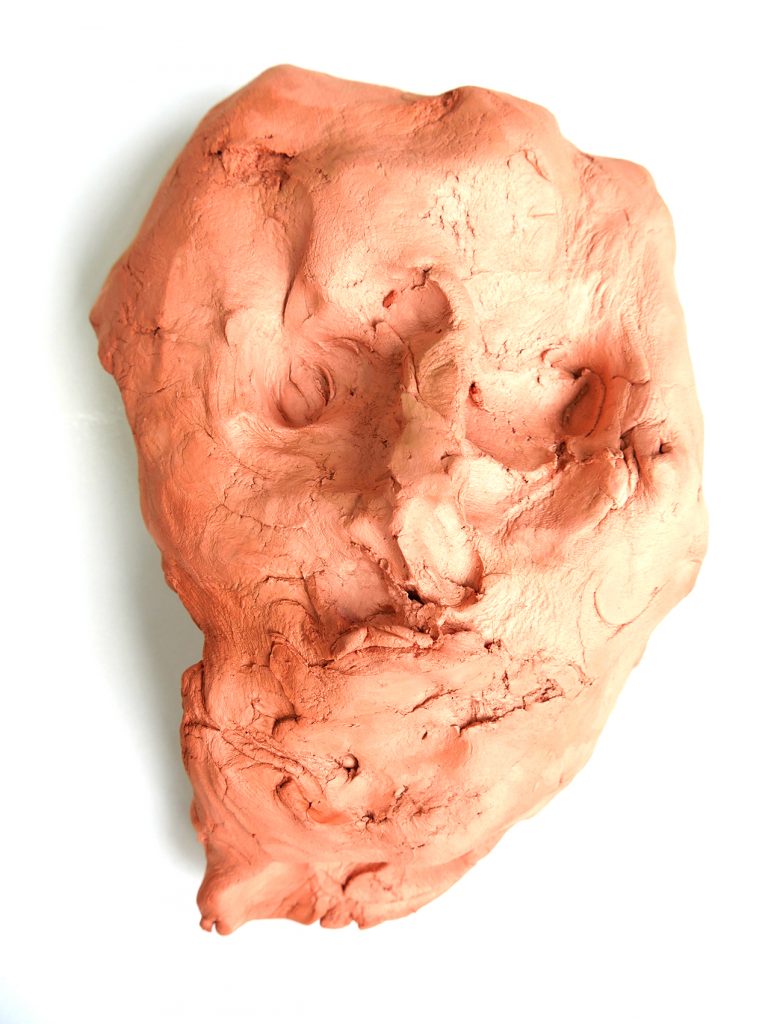
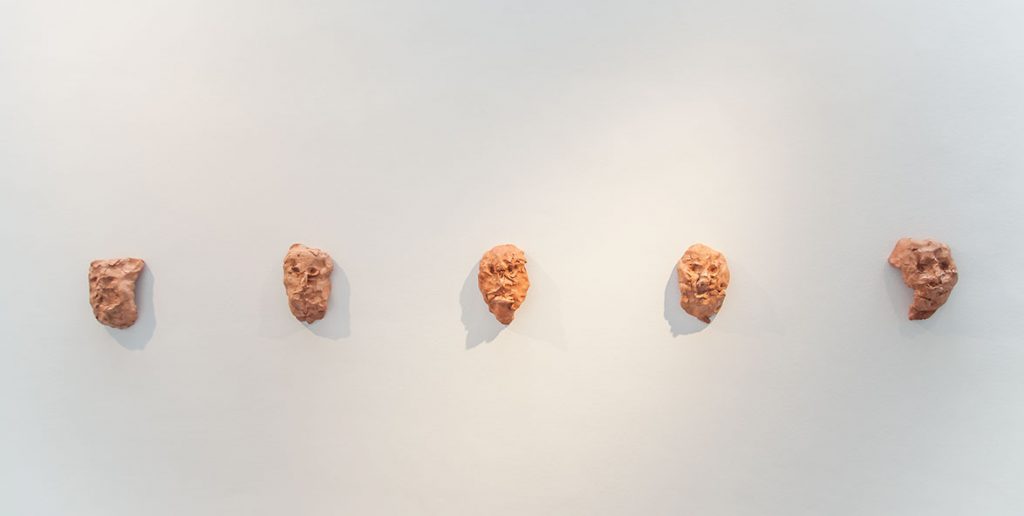
“In her work „Face Detecion“ JOHANNA REICH explores the relationship between man and machine in the digital age. In front of a smartphone camera with face detection she is forming clumps of clay until they were recognized by the facial recognition program of the smartphone as humans. At the point of recognition she stops forming. When does the human appear? When does it disappear? And: What does humanity actually look like? The Software obviously has a sense of abstraction, because it discovers it already in roughly worked lumps.” (Website)
Fito Segrera – 1 & N Chairs (2017)¶
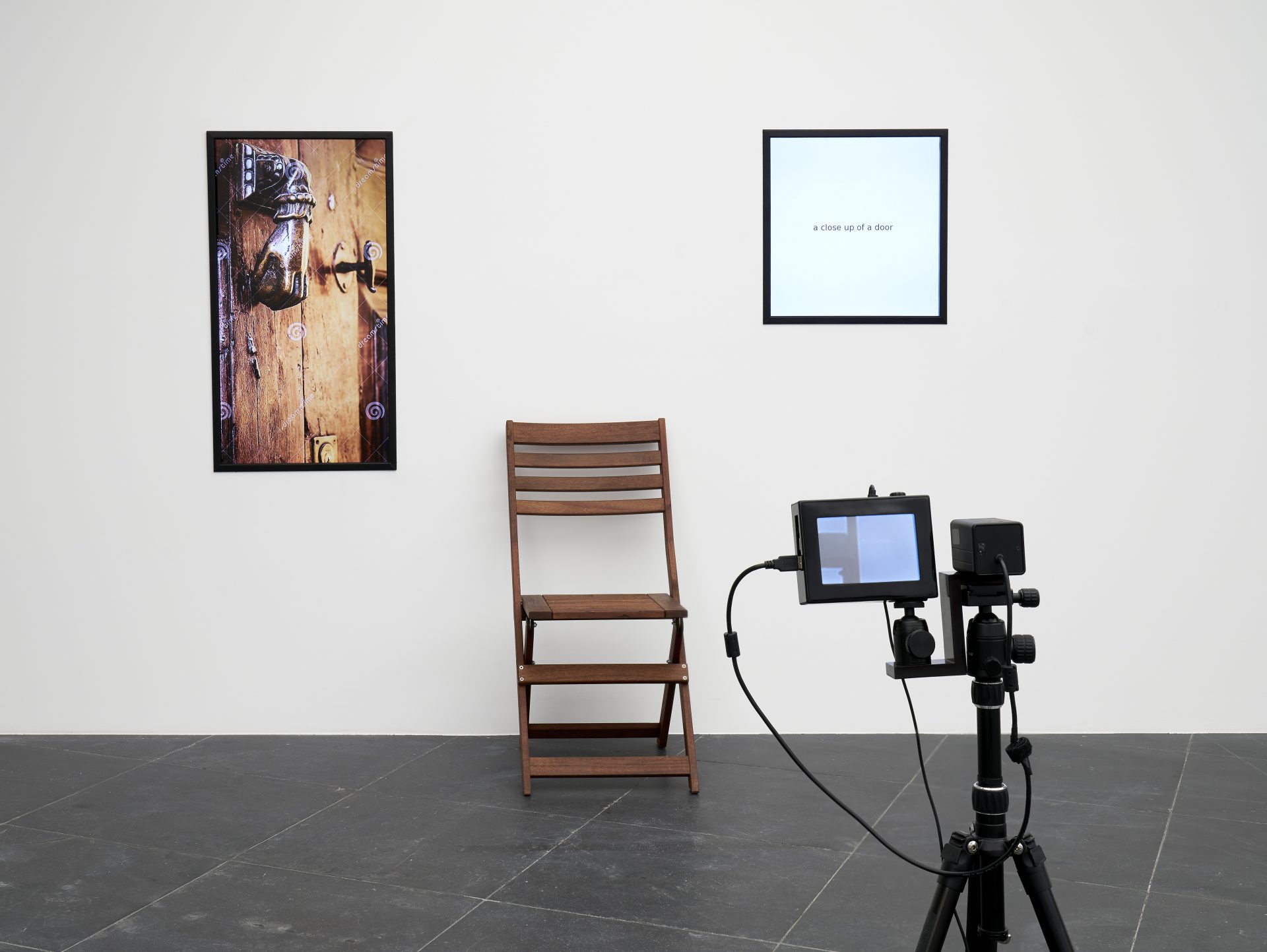
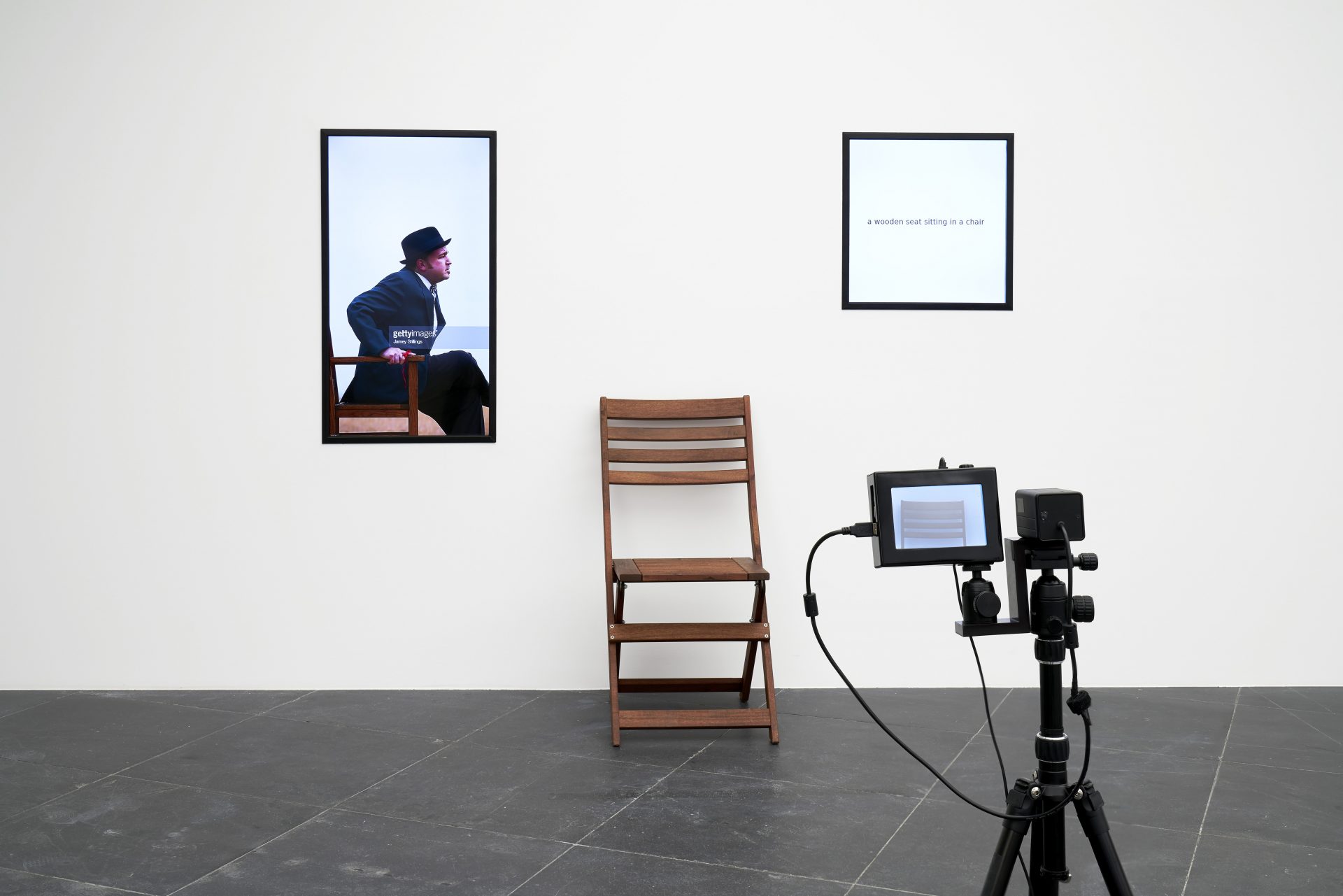
A camera zooms into a part of the chair and takes a pictures. This picture is transmitted to a service from Microsoft. This service returns a textual description of the image, which is displayed on the right screen. Like “A wooden seat sitting in a chair” or “A close up of a door”. Next, this description is used to search for a fitting image with the same service, which is then displayed on the left screen.
While classification is commonly done in order to receive a finite result, this work is continuously searching and creating new interpretations of its subject. The work questions the value of computations and infinite interpretations versus fixed (and believed) results.
Memo Akten – Learning to See: Interactive (2017)¶
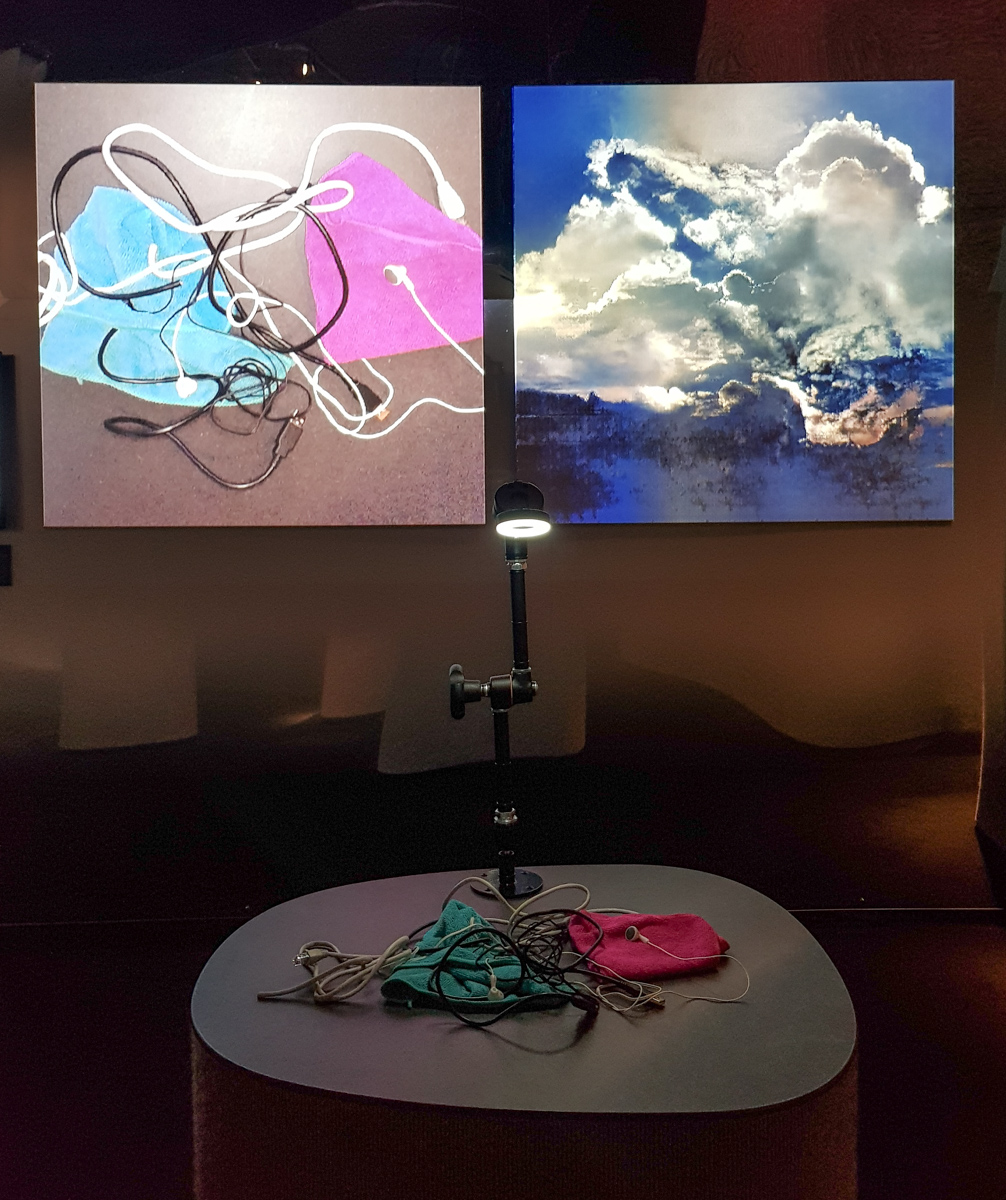
“An artificial neural network looks out onto the world, trying to make sense of what it’s seeing, in context of what it’s seen before. But it can only see through the filter of what it already knows, just like us. Because we too, see things not as they are, but as we are.
Learning to See is an ongoing series of works that use state-of-the-art machine learning algorithms to reflect on ourselves and how we make sense of the world. The picture we see in our conscious mind is not a mirror image of the outside world, but is a reconstruction based on our expectations and prior beliefs.
The work is part of a broader line of inquiry about self affirming cognitive biases, our inability to see the world from others’ point of view, and the resulting social polarization.” (From the artists Web page.)
Philipp Schmitt: Computed Curation (2016-17/18)¶
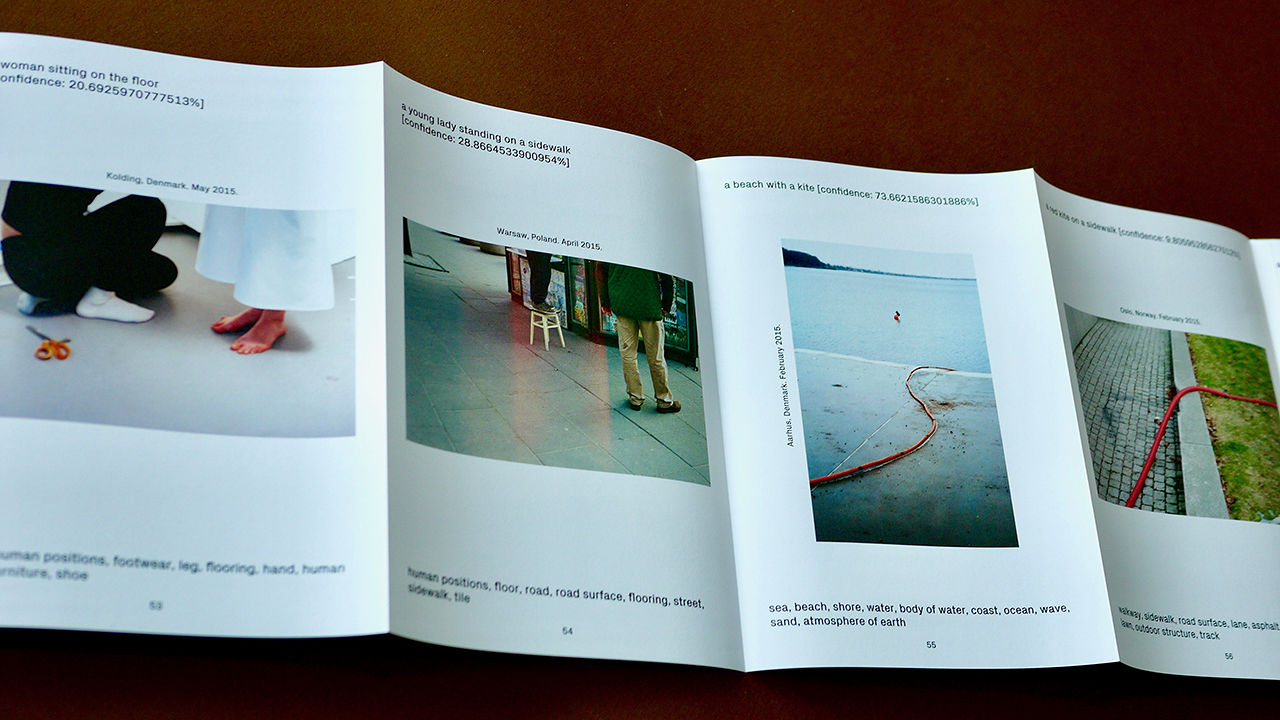
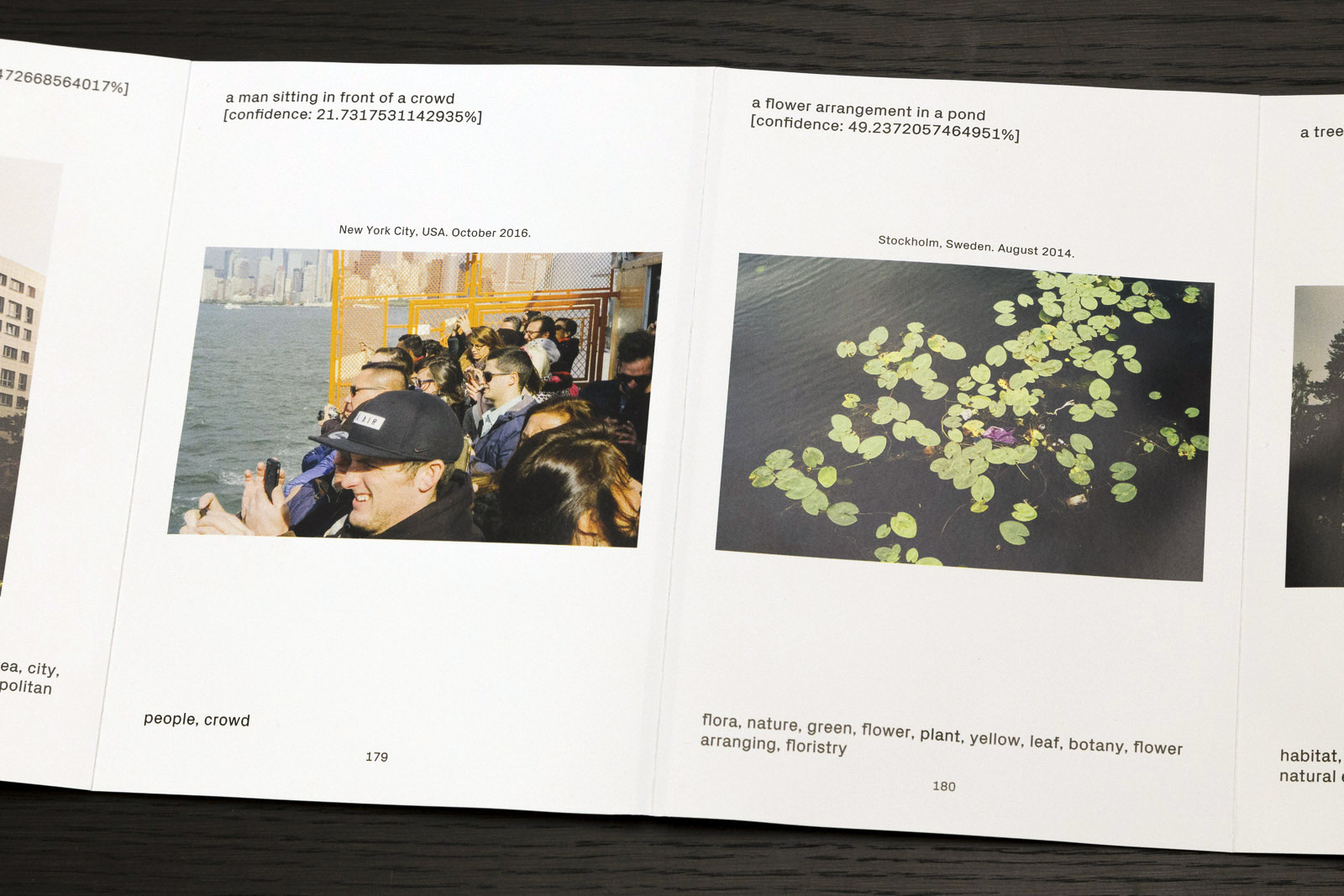
Computed Curation is a photobook created by a computer. Taking the human editor out of the loop, it uses machine learning and computer vision tools to curate a series of photos from an archive of pictures.
Considering both image content and composition — but through the sober eyes of neural networks, vectors and pixels — the algorithms uncover unexpected connections and interpretations that a human editor might have missed.
Machine learning based image recognition tools are already adept at recognizing training images (umbrella, dog on a beach, car), but quickly expose their flaws and biases when challenged with more complex input.
In Computed Curation, these flaws surface in often bizarre and sometimes poetic captions, tags and connections. Moreover, by urging the viewer to constantly speculate on the logic behind its arrangement, the book teaches how to see the world through the eyes of an algorithm.

